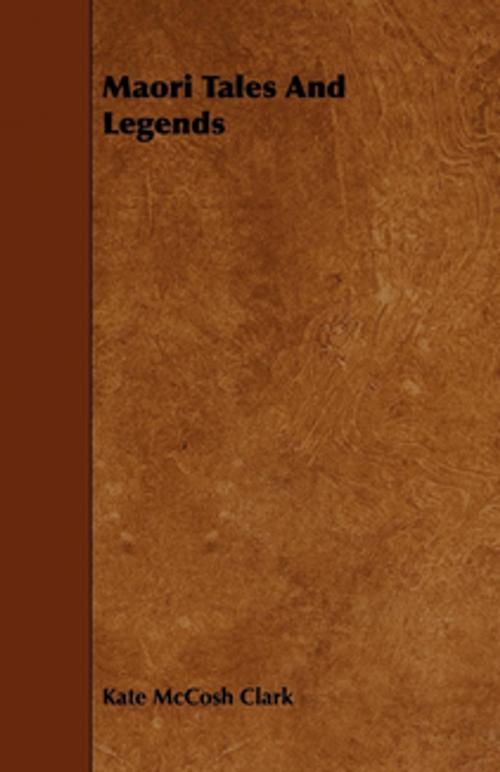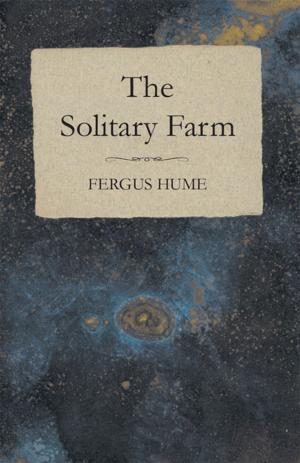| Author: | Kate McCosh Clark | ISBN: | 9781473386655 |
| Publisher: | Read Books Ltd. | Publication: | April 16, 2013 |
| Imprint: | Gadow Press | Language: | English |
| Author: | Kate McCosh Clark |
| ISBN: | 9781473386655 |
| Publisher: | Read Books Ltd. |
| Publication: | April 16, 2013 |
| Imprint: | Gadow Press |
| Language: | English |
Preface: THE following tales are an outcome of a long residence in New Zealand, and of many opportunities whilst travelling amongst the Maoris of becoming acquainted with their folk-lore, superstitions, and customs. From a vast mass of legendary tales, rich in variants, and recorded often in a fragmentary manner, I have chosen those in this little volume as the oldest and best known amongst the natives. I have endeavoured to adhere to the true spirit of the tales themselves, and to give them the form, expression, and speech characteristic of the country and clever native race. The Maoris, as a rule, are eloquent, and their language is full of metaphor and poetical allusion, and musical with open vowels. Every syllable ends with a vowel, every vowel is sounded, and that according to the Italian method. Though the Maori practice of cannibalism in times past is revolting to a higher civilisation, it may, to a certain extent, have been due to the entire absence of any quadrupeds larger than a rat, and to the craving for flesh food so well described in Stanleys accounts of some of the races in Central Africa. The Maoris are a strong race both physically and mentally. Revengeful and cruel to their enemies, they were passionate in love and ever fearless in war. Religious, they venerated their gods, and believed in an atzkn, or spiritual essence, their deities being rarely represented by any image. Their priests were consulted on all great occasions and their mandates obeyed, especially when they spoke as the oracle making known to the people the will of the gods. Whence came the race, with their strange superstitions their worship of Tane, the creation-god, of the sun-god. I must leave for others to discuss. But it is an accepted fact that the natives of New Zealand, and of some of the groups of Pacific Islands, in many respects show evidence of a common origin for instance, their general appearance, long straight hair, ignorance of bows and arrows, of the art of pottery, and their knowledge of the same legends and folk-lore, though told in various forms. When Captain Cook first visited New Zealand he had a native of Hawaii who acted as interpreter. In ancient New Zealand tradition, the Maoris are said to have come from Hawaii in four large war-canoes, about the twelfth or thirteenth century. For these reasons I have not hesitated to include in this book four South Sea tales, which, though not told by New Zealand natives, will, I hope, be acceptable for their beauty and peculiarities, They are specified in the Notes. The illustrations are by the late Mr. R. Atkinson, and are of special value, as they were drawn by that able artist Preface from sketches of natives and native surroundings made by him while staying amongst the Maorjs both in the remote King country and in the hot-lake district Rotorua. His picture of the little grandchild of Ic-heu-heu, the well known war-chief of Lalie Taupo, was exhibited in the Royal Academy in 1891. I regret that the size of the book does not make it possible to do full justice to the beauty of the original drawings.
Preface: THE following tales are an outcome of a long residence in New Zealand, and of many opportunities whilst travelling amongst the Maoris of becoming acquainted with their folk-lore, superstitions, and customs. From a vast mass of legendary tales, rich in variants, and recorded often in a fragmentary manner, I have chosen those in this little volume as the oldest and best known amongst the natives. I have endeavoured to adhere to the true spirit of the tales themselves, and to give them the form, expression, and speech characteristic of the country and clever native race. The Maoris, as a rule, are eloquent, and their language is full of metaphor and poetical allusion, and musical with open vowels. Every syllable ends with a vowel, every vowel is sounded, and that according to the Italian method. Though the Maori practice of cannibalism in times past is revolting to a higher civilisation, it may, to a certain extent, have been due to the entire absence of any quadrupeds larger than a rat, and to the craving for flesh food so well described in Stanleys accounts of some of the races in Central Africa. The Maoris are a strong race both physically and mentally. Revengeful and cruel to their enemies, they were passionate in love and ever fearless in war. Religious, they venerated their gods, and believed in an atzkn, or spiritual essence, their deities being rarely represented by any image. Their priests were consulted on all great occasions and their mandates obeyed, especially when they spoke as the oracle making known to the people the will of the gods. Whence came the race, with their strange superstitions their worship of Tane, the creation-god, of the sun-god. I must leave for others to discuss. But it is an accepted fact that the natives of New Zealand, and of some of the groups of Pacific Islands, in many respects show evidence of a common origin for instance, their general appearance, long straight hair, ignorance of bows and arrows, of the art of pottery, and their knowledge of the same legends and folk-lore, though told in various forms. When Captain Cook first visited New Zealand he had a native of Hawaii who acted as interpreter. In ancient New Zealand tradition, the Maoris are said to have come from Hawaii in four large war-canoes, about the twelfth or thirteenth century. For these reasons I have not hesitated to include in this book four South Sea tales, which, though not told by New Zealand natives, will, I hope, be acceptable for their beauty and peculiarities, They are specified in the Notes. The illustrations are by the late Mr. R. Atkinson, and are of special value, as they were drawn by that able artist Preface from sketches of natives and native surroundings made by him while staying amongst the Maorjs both in the remote King country and in the hot-lake district Rotorua. His picture of the little grandchild of Ic-heu-heu, the well known war-chief of Lalie Taupo, was exhibited in the Royal Academy in 1891. I regret that the size of the book does not make it possible to do full justice to the beauty of the original drawings.















